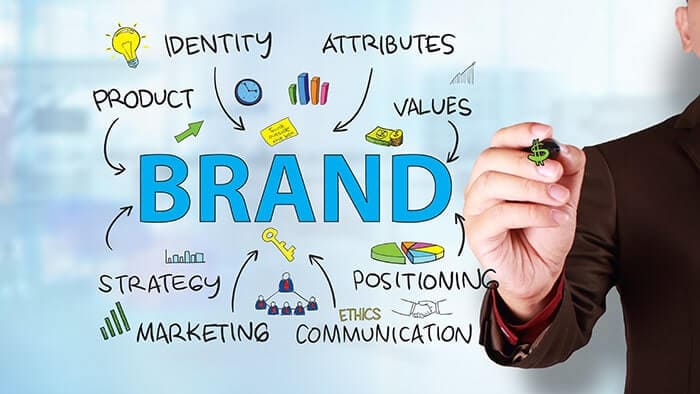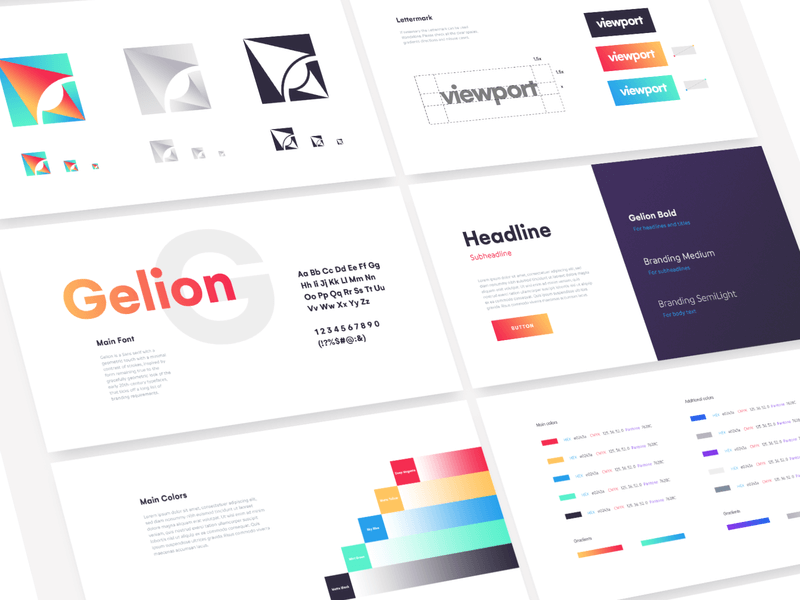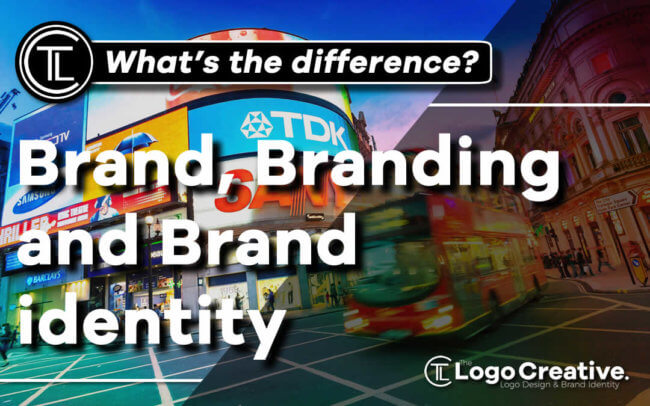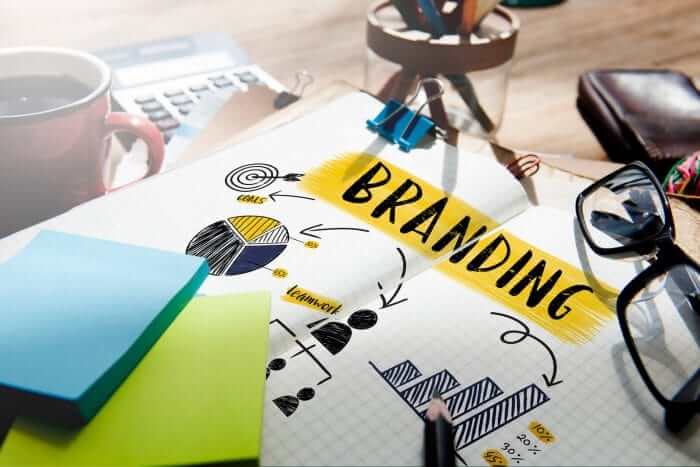Branding is a confusing topic. People use the terms: brand, branding and brand identity as interchangeable synonyms every single day — but they don’t mean the same. In this article, I will explain how to understand the differences between a brand, branding and brand identity… So that you have clarity next time you think and talk branding.
Table of Contents
What is a brand?

The word “brand” is used pretty loosely these days. For example, people might use the word “brand” to talk about logos, but a logo or brand identity is not your brand — it’s much more than that.
A brand is a set of intangible assets of a company, service or product. It is a definition of an emotional relationship between customers and the business.
A brand is a person’s gut feeling about a company. Every day we discover new products and new businesses. Whether it is a new product in your supermarket, a new tech company or the airline you’ve never heard about before.
Competition creates infinite choices and companies look for ways to connect emotionally with customers, become irreplaceable and create lifelong relationships.
But also with that being said, brands are not what you say they are – it’s what they say they are. Branding is a relationship and it serves people as emotional navigation.
Let’s take Apple as an example — they’ve built a tribe. A tribe is a group of people connected to one another, connected to a leader, and connected to an idea.
So you see, people fall in love with brands, trust them, and believe in their superiority. So if you take Apple as an example — there are brand fanatics out there who will buy their products no matter what, even if it’s not any better or any cheaper than the competition.
Even if it means standing in line for hours or days. how a brand is perceived affects its success. In one sense, a brand is a promise — it’s a promise to its customers.
If you think about any brand that you know: Apple, Tesla, Nike, Starbucks… you can immediately figure out what they promise to you.
And if you happen to be their customer, you have a relationship with that brand. So if they deliver on that promise well— you are a happy customer.
As a result you will continue to build your confidence in the brand and it will reinforce that relationship. So to sum up:
A brand is the way that your customer perceives you — it’s the relationship.
Now, you can use many different tools to help you shape that perception about your brand, so that your customers can build that relationship. This gets us closer to the process of branding.
What is branding?
Branding is a process of building a brand and managing that perception. And it is a disciplined process involved in creating a memorable name and an image for a product, company or service in the consumer’s minds.
Branding can be a genuine game-changer for your business. The discipline has come a long way, from starting out as a stamping of marks of ownership on the backsides of cattle… Through the manufacture of identities for products competing on supermarket shelves, to the creation of complex marketing campaigns for countless global organizations.
And the process of branding is done mainly through advertising campaigns with a consistent theme. With the consistent use of the brand identity (what we can see) and the brand strategy underlying it (what we feel).
Branding involves both: managing tangible and intangible attributes of a product or service. So the process of branding is a communication of those characteristics, values, and attributes that clarify to customers what this particular brand is and is not.
It’s up to you how you communicate those characteristics. So make sure you communicate what you want to be associated with. Whether it’s your company, a product or you as a personal brand.
Branding is the BIG plan, plan on how you’re going go about shaping that perception in the minds of your target audience. Whether it is a product, service or a person – image and consistency (brand identity) play a huge role in branding.
This gets us closer to Brand Identity.
What is brand identity?

Brand identity is tangible and it appeals to the senses. Brand identity is basically what you can see — it’s the logo, name, colors you use, typography, layout, images, the way you sound to others, your messaging and so on.
It’s the packaging of a product, it’s your website, your social media and every single touch-point at which a customer comes in tangible contact with your brand.
You see it, touch it, hold it, hear it, watch it move. Brand identity fuels recognition, amplifies differentiation, and makes big ideas and meaning accessible.
So everything that is visual about a brand – we call it brand identity and how many elements a brand identity system consists of depends entirely on how many touch points needs to be designed for a brand.
So the goal of a brand identity designer is to find artifacts that tell your story and engage people with who you are in a familiar and meaningful way.
That means ensuring that every time your artifacts show up, they are consistent in their appearance.
Brand identity takes disparate elements and unifies them into a whole system. The key to building a successful brand identity system is consistency.
Consistency is achieved by having guidelines on how you should use your visual assets when designing new touch points.
All those elements come together to form a Brand Identity Guidelines document. And this document guides us, designers, marketers and everyone who is working with that brand.
On how to use the brand assets to ensure that the consumer receives a clear, consistent message about that brand. So the logo alone is not brand identity, but it’s a part of brand identity.
How the logo is shown on applications, what typefaces and colors your company uses – all those aspects form the visual identity system.
Therefore, the best identity programs embody and advance the company’s brand by supporting desired perceptions (through design).
After all, design plays an essential role in creating and building brands (the process of branding). In fact, design differentiates and embodies the intangibles — emotion, context, and essence — that matter most to consumers.
design without strategy is useless. That’s why it’s important to start with the intangibles, your purpose, vision, values, positioning, message and so on.
Now that you can build that foundation for how you want customers perceive your brand and then, and only then, you should hire a designer to take that and visually convey that to the world.
Designers do not design a brand, but what they design is brand identity. A designer’s job is to create a desired perception by using any means available in terms of visual language.
Graphic design is not art — it needs to serve a commercial purpose, and it needs to solve a problem or help you obtain a business objective.
To sum up — your logo is not your brand. There is an entire process behind brand building. Strong brands don’t just happen.
They are the results of a good strategy combined with good design.
Conclusion:
Brand is a relationship between customers and the business, it is that perception you have about a product, company or service.
Branding is the process of building that awareness and extending customer’s loyalty. We’re in the process of building that perception. And brand identity is what we can see, it’s the design of a brand.
For further reading check out this article which explains in great detail What is the difference between Logo Design, Visual Identity, Branding? gfdg
Join The Logo Community
We hope you have enjoyed this article about Brand, Branding and Brand identity – What’s the difference?. If you would like more personal tips, advice, insights, and access to our community threads and other goodies join me in our community.
You can comment directly on the posts and have a discussion with Andrew, the Founder of The Logo Creative.
*TIP – We recommend Skillshare to learn online. There are tons of classes for everything including graphic design, web design, marketing, branding and business related courses. Get a free 2 months with our link and you won’t regret it Trust us!
Author Bio
This article was written by Jennifer Ford from Read My Blog Online.



